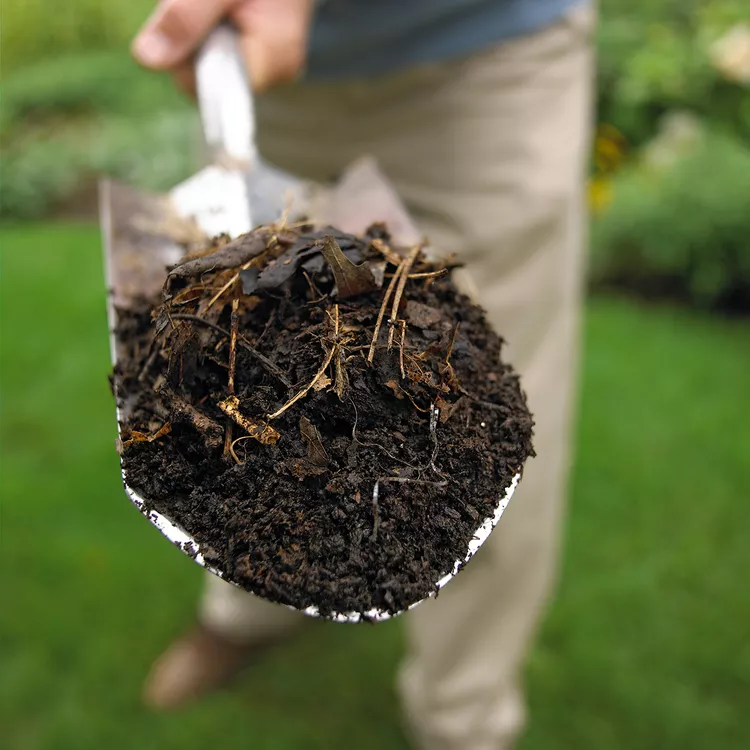How to Improve and Amend Clay Soil

There's no doubt about it; working in heavy clay soil is a pain in the back. It sticks to your shoes (and tools) and can be more challenging than gardening in sandier soil. However, despite all the hard work, clay soil has its benefits. Namely, it can host life-giving plant nutrients and retain moisture better than other soil types. With some soil amendments, you can turn your sticky clay into the humus-rich, fertile goodness your plants will thank you for.
Amending Clay Soil
There's a notion that adding sand to heavy clay soil will help lighten it, but that's a myth. In fact, 99 percent of the time, it turns your ground into cement. Soil treated this way becomes so tough that worms can't live in it.
Instead, reach for organic matter, such as compost, leaf mold, and well-rotted manure. Organic matter is the best way to amend clay soil: It lightens the soil texture, discourages compaction, adds nutrients, improves drainage and aeration, moderates soil temperature, and provides pore space, essential to plant growth.
Amending your soil takes time and patience but rewards you many times over in the end. The first step should be to add as much organic matter as possible and mix it deeply into your soil. Before you start, have a soil test done. That way, you can incorporate lime, phosphorus, or amendments necessary while tilling in the organic matter. If you're creating a new bed, this will be much easier.
Start the process by using a tiller to loosen the existing soil (if it is a large area) or a spade (if it is a more manageable size). Next, spread about 2 inches of compost on top of the tilled soil and work that in. Repeat the process two more times. Remember to only work in your clay soil if it is relatively dry. Working or walking on wet clay soil seriously damages the structure you are trying to improve.
Working around existing plants will take more time and caution. Autumn is a great time to do this because the weather is generally drier than in the springtime, and the cooler temperatures are more pleasant to work in. You can even make it an annual part of putting the garden to bed for winter.
Spread a few inches of compost over the ground between the plants and use a narrow spade to turn the compost into the soil. Repeat that at least once more and plan to make that part of your routine. Always work so that you're walking backward and away from your freshly turned soil.
Over time, regular applications of compost, manure, and other organic matter will improve your soil's structure, tilth, and overall health.
One last word on gardening in clay soil: Choose plants naturally adapted to growing in clay. It's always better to work with what you have than to try and change it entirely. Happily, for those of us that garden with heavy clay soil, there is an abundance of beautiful plants to choose from.
More on Organic Matter
- Emulate how nature works. In wild areas, stems and leaves fall on the ground and rot, amending the soil from the top down. To follow nature's lead, mulch poor soils with organic matter such as leaves, hulls, or bark.
- Use what organic material is most available in your region. Whether it's leaves, pine needles, hulls, or seaweed, it's all useful for soil improvement. Don't believe the old garden myth that pine needles or oak leaves make soil acidic; it's not true.
- When using leaves for mulch and amendments, chop them with a lawn mower or chipper. Chopped leaves stay in place, are more weed-smothering, and break down more quickly.
- Apply top-down soil amendments in layers only 2 or 3 inches deep to allow rain to percolate through.
- Employ the power of roots to break up heavy soils and add organic matter. Plant marigolds, zinnias, or other annuals in new gardens, cutting them off at ground level at the end of the season. The roots rot in the soil, improving soil structure.